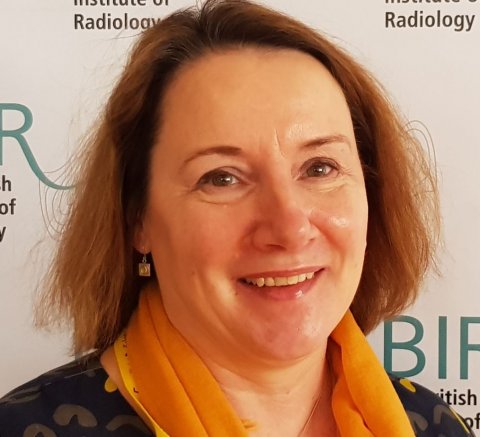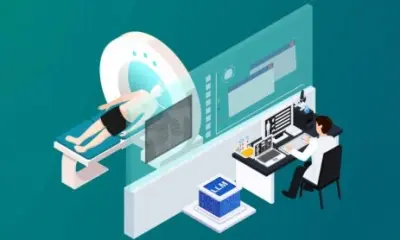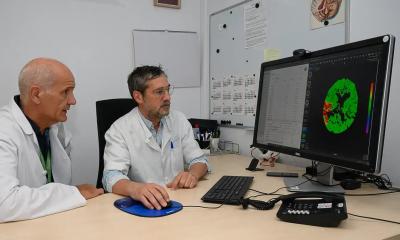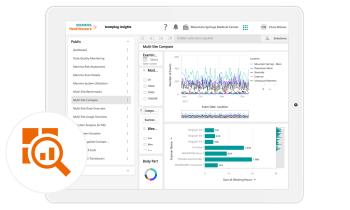Article • 'The Model Hospital' for 2030
The NHS blueprint for imaging delivery
A new strategy to transform imaging in the UK’s National Health Service (NHS) has been unveiled after a major data-gathering project to assess the present state of the service.
Report: Mark Nicholls
The process will see the creation of a national strategy for imaging networks designed to deliver improved care and better value services for patients. Key to this has been ‘The Model Hospital’ concept – a digital tool from NHS Improvement that enables Trusts to compare their productivity and identify opportunities to improve.

One of the major projects – undertaken between December 2017 and April 2019 – was data collection from all hospitals to gain a clear picture of the status of imaging services countrywide and form the basis of a blueprint for future service delivery. How that was undertaken was outlined in a presentation to the British Institute of Radiology annual congress in London by Fiona Thow, Head of Imaging Services Transformation at NHS England and NHS Improvement. Her presentation ‘Turning nationwide data collection into a new delivery model for imaging in the UK’ discussed how the project evolved by acquiring information on imaging assets, staffing levels, collaborations on imaging services as well as machine age and specification.
This was a lengthy and ‘painful’ process for radiology managers, Thow pointed out, in providing an asset register of their equipment, data on machine availability and staffing, but it had now created a clearer picture of imaging in the UK. With a significant part of the data having contributed to The Model Hospital project, ‘From the data we started to look at the total costs of the imaging service, compared with similar departments of similar size,’ Thow said. ‘We wanted to understand and quantify our position and know how use our resource and how much time is spent on clinical care, reporting and on MDT costs. What sits behind it is a necessity for good job planning; if you do not understand what you have, how do you plan for the future? The hope was to understand the service delivery model and see how that compares with peers. There is a huge national difference in terms of how we use our workforce and understanding the variation – and if it is warranted or unwarranted – can be used for benchmarking improvement.’
Delivering an effective, high quality, service requires investment in new equipment and staff, underpinned by a new model of diagnostic provision
Fiona Thow
What emerged? In the NHS, £2.2bn is spent on delivering imaging services (£1.4bn of this on staff pay); that there are 3,000 medical consultants and a non-medical workforce of 23,500 with 15% vacancy rates, and £182m spent on out- and in-sourcing to manage demand. ‘Before this, we did not really know how much we spent on imaging in this country,’ Thow said. ‘Capital equipment is out of date and there was no national approach to imaging IT infrastructure.’
A key part of formulating a longer-term imaging plan was recognition that over 1.5 billion diagnostic tests are undertaken every year and feature in four out of every five patient pathways. However, capacity in diagnostic services has not kept pace with growth in demand – the NHS has fewer MRI and CT scanners per capita than most OECD countries, yet patients referred for diagnostic tests have risen by more than 25% over the past five years. ‘Delivering an effective, high quality, service requires investment in new equipment and staff, underpinned by a new model of diagnostic provision,’ Thow continued.
Implementation is to begin early in 2020. The aim: new diagnostic imaging networks in place by 2023 to amalgamate clinical expertise, deliver more efficient NHS radiology services and a sustainable model of provision to meet growing demand over the longer term. The strategy complements the recently-announced £200m of capital funding dedicated to improving the quality of diagnostic imaging equipment to support cancer screening and speed up diagnosis. This is seen as a step towards achieving the NHS Long Term Plan objective of diagnosing three-quarters of cancers at an early stage by 2028 through improved screening processes.
Profile:
Fiona Thow has been Head of Imaging Services Transformation for NHS Improvement since 2017. In previous roles she has supported a range of improvement programmes across diagnostic services, including imaging, audiology, endoscopy, physiology diagnostic services and genomics. Between November 2015 and March 2017, she was scientific advisor to Chief Scientific Officer of NHS England.
12.03.2020










